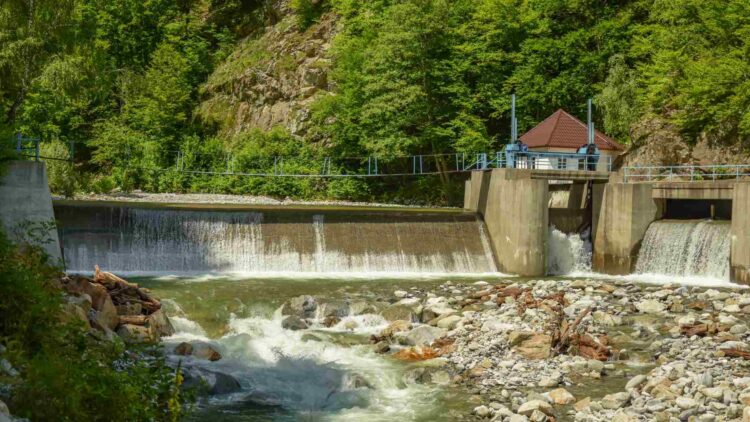The fight for clean, affordable energy is ongoing, and it seems like the burden is shiting towards homeowners to contribute to the grid, as there is just not enough infrastructure to provide enough power to sustain major metropolitan areas in times of high consumption. Solar panels have been the go-to solution for a few years, but there might be a competitor hitting the market which could revolutionize the way we see energy production and that is Microhydropower. It is a relatively new technology, which taps into the movement of water to generate electricity, offering a steady and eco-friendly energy source
How Microhydropower Works
As it name suggests, microhydropower is all about using the natural movement of water to produce electricity but unlike massive hydropower plants, these small-scale systems are designed for individual homes or small communities, with power outputs ranging from just a few hundred watts to about 100 kilowatts.
The system is quite simple and similar to traditional hydropower stations, it works by channeling flowing water to spin a turbine, which then converts the energy into usable electricity, and as long as water keeps flowing, power keeps generating, providing a reliable energy source without interruptions.
According to energy expert Dr. Lisa Carter, “Microhydropower is one of the most consistent renewable energy options because it doesn’t rely on the sun shining or the wind blowing.”
The fact that it is independent of external factors is a big draw, but so is its sustainability, as, since it works by harnessing natural water sources, it does not produce pollution or greenhouse gases. It can be set up in streams, rivers, or even specially designed water channels, making it adaptable to different locations. It is also quite cheap overall, even if the installation costs can be high, once the system is in place is requires little to no maintenance and little to no supervision.
Once installed, these systems can help homeowners cut down or even eliminate their dependence on the electrical grid, leading to significant savings over time, and since it is located on a water source it is compatible with other sources of clean energy that they may want to install. “It’s a long-term investment that pays off in both savings and energy independence,” says Carter.
Having said all the perks, microhydropower is not a one-size-fits-all solution. One of the biggest factors to consider is water availability which in this case means a steady, year-round water source. This is crucial for consistent energy production as, if a river or stream’s flow fluctuates too much, the system might not generate enough electricity, especially during dry seasons. This makes it unsuitable for drier climates where solar panels thrive or places where seasons are harsh, as the summer months will limit water availability and snow in the winter will not be conducive to water flowing.
Something else to consider is the environmental impact of the initial installation, because, even though microhydropower is far less disruptive than large dams, it can still affect local ecosystems and aquatic life. Before the system can be installed, homeowners will need to go through environmental assessments and obtain permits to ensure the system meets regulatory standards. “Being mindful of the surrounding environment is essential when setting up microhydropower,” Carter emphasizes. “A well-planned system can coexist with nature while providing clean energy.”
It is still a great solution in many areas of the country, especially those wet areas with mild climates, and as the world at large moves towards sustainable energy sources and government incentives and grants for green energy projects increase, it is important to have alternatives that work in every environment, not just in sunny states.

